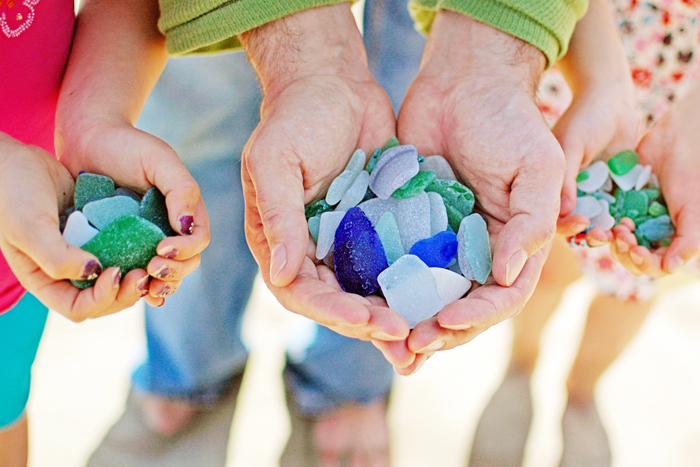(Published in The Globe & Mail)
If you’re wandering the beach this weekend, keep your eyes open for a slash of scarlet.
Sea glass, which was once relegated to mason jars on cottage windowsills, is having its day in the sun. A rare piece of orange or red glass can fetch as much as $250.
And now jewellers are taking advantage of its subtle beauty, incorporating pieces into bracelets, earrings and cufflinks.
A wide palette of colours, which include cornflower blue, amber and jade green, makes it an ideal replacement for gemstones. The value is determined not only by colour (orange and red are the most highly prized) but also by condition. Beware hard edges: Aficionados speak of “mature” pieces that are rounded and smooth, with a “frosty,” slightly pitted surface. Very rare pieces have bubbles or lips that indicate that they are more than 100 years old.
Gail Rhyno, a jeweller based in Charlottetown, uses the glass in hand-wired silver jewellery, which she sells through her website, . Rhyno’s sea glass is hand-picked from the shores of the Northumberland Strait on Nova Scotia’s Sunrise Trail.
“My mom’s been collecting sea glass for more than 20 years,” says Rhyno, who rescued her mother’s collection from a yard sale at her parents’ farmhouse.
She says sea glass is perfect for use in jewellery. “There are endless possibilities,” she says.
The subtle colours and textures of the glass make it well suited to silver, says Mary Beth Beuke, president of the North American Sea Glass Association ( ) and owner of West Coast Sea Glass ( ) based in Washington State.
Her store is so busy, custom orders (mainly for pendants) are backed up eight weeks. Prices for her sterling silver jewellery range from $90 to $1,400, depending on the rarity of the glass and the intricacy of the design.
Beuke says part of the appeal of sea glass is its history. “Sea glass has been on a journey, and it has a life history. It has been somewhere and it has touched someone else in some way.”
Colour is key in determining the history. Beuke’s website includes information on the source of particular colours. For example, orange pieces are identified as “a type of rare glassware called amberina, manufactured in the late 1800s-early 1900s.”
“That’s the No. 1 priority for a lot of sea glass collectors,” says Richard LaMotte, the Maryland-based author of Pure Sea Glass. “They want to identify what they find and find out how rare it is.”
He says three-quarters of sea glass comes from broken bottles that have either been discarded on land or thrown overboard from ships. The rest is tableware.
According to LaMotte, the best colours are found in glass dating to the late 1800s and early 1900s, before automation took over and “pushed all the colours to the standard white, green and brown.”
Despite her large collection, you’ll still find Rhyno regularly scouring the beaches of PEI. But she says she has more luck back in Nova Scotia. “I’ll never find another beach like my parents’ beach,” she says.
